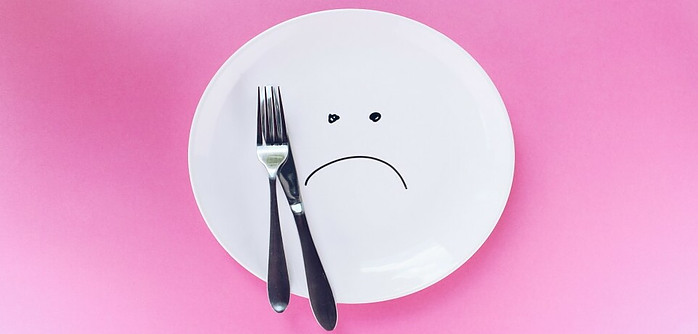
If you’re here, you’re curious about low carb diet plans and their role in weight management and overall health. A low carb diet typically involves reducing carbohydrate intake and, instead, favoring proteins, fats, and vegetables that are low in carbs.
When you cut back on carbs, your body starts to use fat as its primary fuel source. This leads to what’s known as ketosis, which can result in weight loss and has been linked to other health improvements.
Engaging in a low carb lifestyle may offer benefits like improved blood sugar control, elevated energy levels, and even a reduction in risk factors for certain diseases. That said, the needs of each individual vary, and it’s crucial to weigh the potential benefits against personal health circumstances.
Before adjusting your diet, have a chat with a healthcare provider. They can ensure that the dietary changes align with your health goals and existing conditions. This step supports the responsible and mindful adoption of a diet plan that works best for you – a principle I hold in high esteem.
In the realm of the best low carb diet plans, the ketogenic or ‘ keto’ diet is exceptionally popular. It’s known for its significant shift toward fats and away from carbs. Up next, I’ll take you through the intricacies of the ketogenic diet, shedding light on why it’s the talk of the town and how it sets itself apart from other low carb strategies.
The Ketogenic Diet: A Deep Dive into High Fat, Low Carb Eating
The ketogenic diet, often referred to as ‘keto,’ pivots on a high fat, very low carbohydrate intake. This ratio drastically alters the way your body fuels itself. And while ‘keto’ has become a buzzword in the weight loss community, its origins are medicinal, developed to manage epilepsy. Still, its relevance has grown for people looking to shed weight and gain energy.
Now, keto works by pushing your body into a state called ketosis. Here, instead of relying on carbohydrates for energy, your body burns fat, leading to the production of ketones. This metabolic shift is the cornerstone of the ketogenic diet’s effectiveness.
In practice, keto usually means getting around 70-80% of your daily calories from fat, 10-20% from protein, and a mere 5-10% from carbs. This typically translates to fewer than 50 grams of carbs per day. Avocados, cheese, nuts, and fatty fish are keto diet mainstays, with carbs mostly coming from leafy greens.
As for health benefits, besides potential weight loss, some studies suggest improved blood sugar regulation and enhanced mental clarity. Risks? The diet can be strict and may lead to nutrient deficiencies if not well planned. It’s also important to remember that this might not suit everyone, with factors like lifestyle and individual biology in play.
The key to sticking with keto or any diet is fitting it into your life, not the other way around. If the thought of giving up most carbs feels daunting, consider starting small, and be aware of the transitional phase known as ‘keto flu,’ where you might feel a bit off while your body adjusts.
The Paleo Diet: A Low Carb Strategy with an Ancestral Approach
The Paleo diet harks back to the eating patterns of our Paleolithic ancestors, focusing on whole, unprocessed foods. It’s a blueprint that omits grains, legumes, and refined sugars, inherently reducing carbohydrate intake. In this section, I’ll cover the foundations of the Paleo diet and how it differs from other low carb approaches.
Sticking to the Paleo diet means enjoying a variety of foods: grass-fed meats, wild-caught fish, a bounty of vegetables, fruits in moderation, nuts, seeds, and healthy fats like avocado and coconut oil. This approach naturally limits carbs by cutting out common sources such as bread, pasta, and sugary snacks.
In terms of blood sugar management, the Paleo diet can be impactful. Foods in this plan have a low glycemic index, meaning they provide more stable energy levels without the spikes and crashes associated with higher carb diets.
When comparing the Paleo diet to other low carb strategies, its emphasis on food quality and ancestral patterns stands out. Unlike the ketogenic diet, which focuses heavily on macronutrient ratios, Paleo prizes the nutritional profile and minimal processing of the foods.
Even with its distinct meat-forward reputation, the Paleo diet is adaptable. Vegetarians can rely on eggs, nuts, and seeds for protein and healthy fats, while incorporating a wealth of plant-based foods that align with Paleo principles.
As we transition to the next section, remember that customization is key. No single diet is a one-size-fits-all solution, so it’s important to consider personal tastes, goals, and lifestyle when selecting the right low carb path.
Customizing Your Low Carb Plan: Tips and Tricks for Individual Needs
Creating a low carb diet that fits your lifestyle and health goals isn’t a one-size-fits-all process. I’ll guide you through personalizing your diet to meet your specific needs.
Start by taking stock of your health objectives. Whether you’re aiming to lose weight, manage diabetes, or boost overall well-being, your goals will influence the structure of your low carb eating plan.
Remember to factor in any dietary restrictions or medical conditions you may have. If you’re unsure, it’s essential to consult with a medical professional who can provide tailored advice.
Exercise is a powerful ally to any diet plan. Even light physical activity, when coupled with a low carb diet, can accelerate weight loss and enhance muscle tone.
Mindfulness is key. Pay attention to how foods affect your mood and energy levels. This awareness can help you make better dietary choices and maintain a harmonious relationship with food.
As you forge ahead, expect a learning curve. You’ll discover what works best for you through trial and error. The trick is to remain adaptable and forgiving of any missteps along the way.
Finally, consider the long haul. Sustainability is crucial for lasting success. Small, incremental changes can lead to significant, lifelong benefits. Patience and perseverance will help cement these healthy habits into your routine.

Having diabetes that runs in my family, I try very hard to remain on a low-carb diet, as carbs tend to break down into sugars in the bloodstream.
I tend to follow a mix of the Keto and Paleo diets for the most part. I eat grains, so that goes against the Paleo diet, but I feel that certain grains are important to our diets, like rice and oats.
I do not eat fish or seafood, but I have a slight allergy. So I eat a lot of chicken and pork, I like beef but do not eat a lot of beef. I get a lot of flack over the pork admission, but I like pork and do not care.
My mom started us kids on this type of diet at young a age, she did this as she knew of the threat of diabetes we all faced. I had no clue that it was a diet until I got older and realized that I ate differently than most of my friends.
I am grateful that my mom raised us on this diet, I have good eating habits as an adult and passed them along to my daughter as well.
I enjoyed reading this article and learned a thing or two as well.
Stacie
It’s a very good strategy to follow a balanced diet combined with a physical activity, if you want to stay healthy and lose weight.
Hey Gary, your article on low carb diets really got me thinking. I’ve never tried keto or paleo, but they sound intriguing. I’ve done intermittent fasting before, and it was a game-changer for my health and eating habits. It helped me cut down on evening cravings and overall, I felt better. What’s your take on fasting as a part of a healthy lifestyle? Do you think it can work well with low carb diets like keto or paleo?
Intermittent Fasting should definitely be a part of your plan to maintain healthy lifestyle and it works very well with low carb diets. Key is to consume less calories on a daily basis, depending upon your age and other medical conditions.